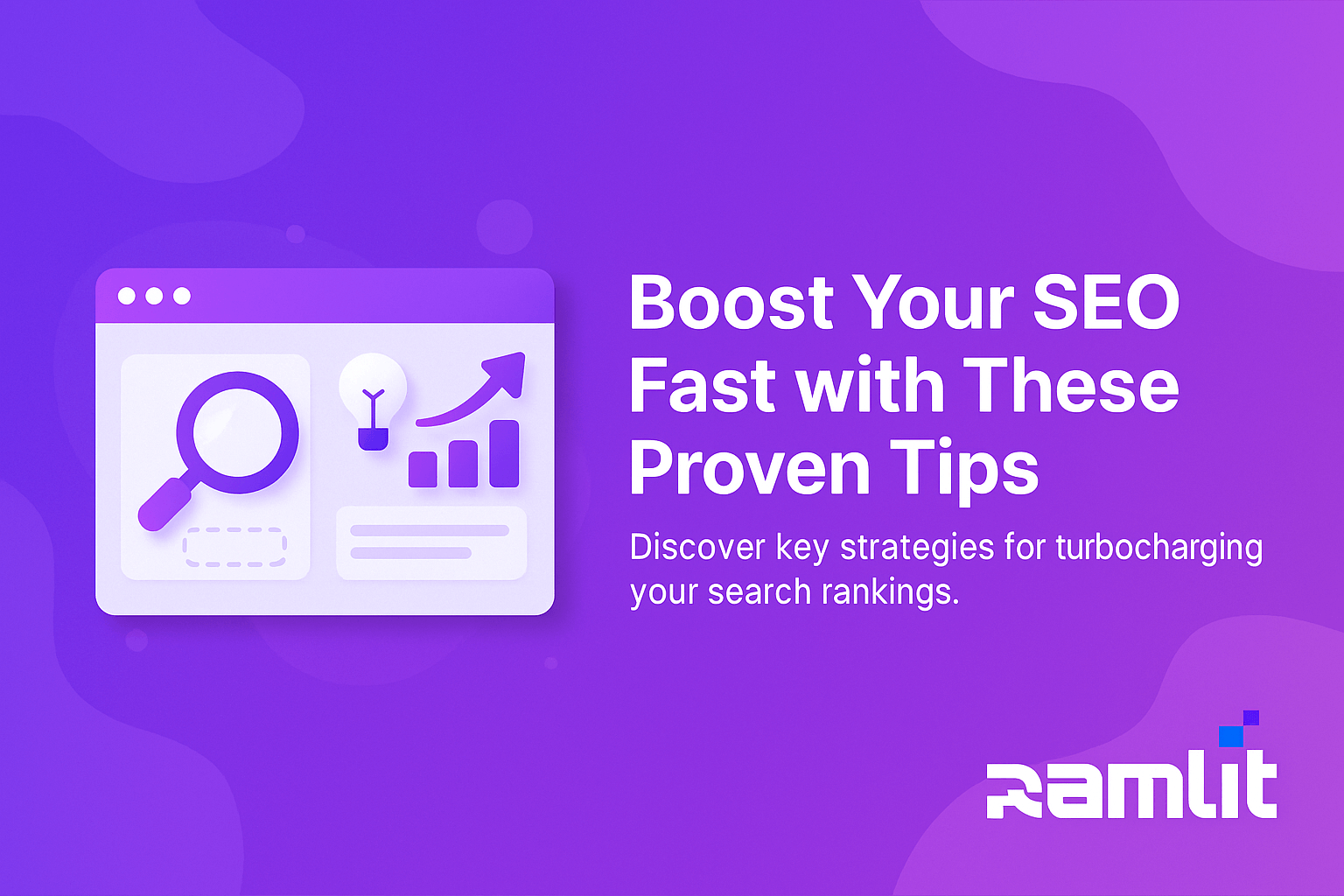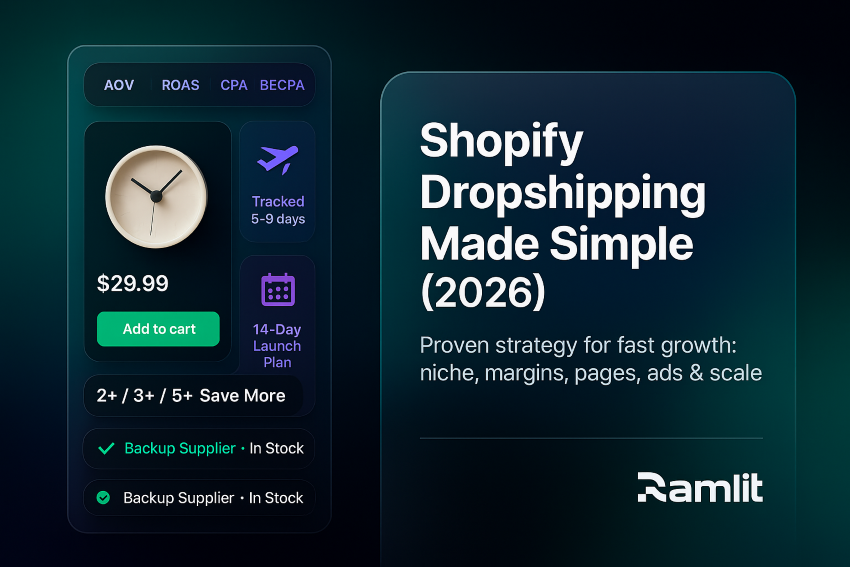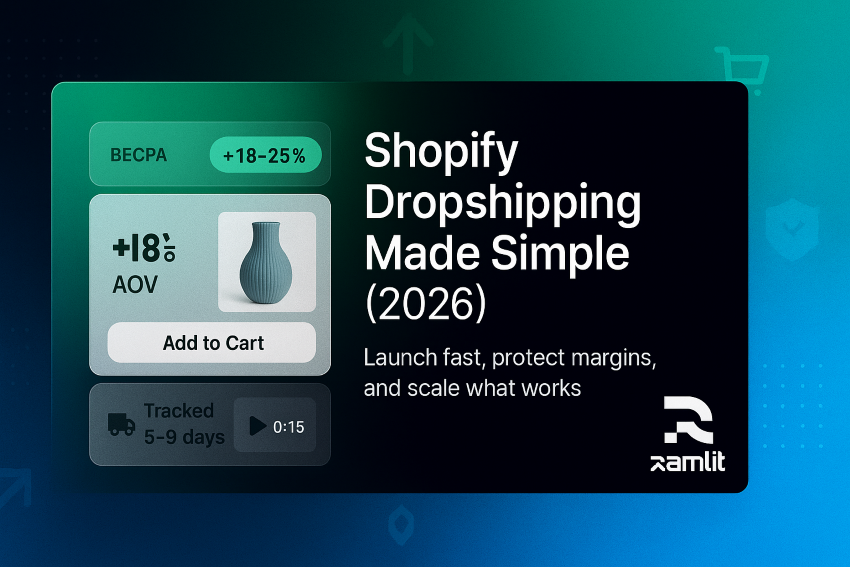Introduction
If your website isn’t showing up on Google’s first page, you’re practically invisible online.
Every day, millions of users search for services, products, or answers you probably offer—but without solid SEO, your content remains buried. And here's the harsh truth: 75% of users never scroll past the first page of search results.
But here’s the good news: SEO isn’t magic. It’s a repeatable process built on proven strategies—and you’re about to learn them.
In this guide, we’ll walk you through step-by-step strategies to boost your website’s SEO, rank higher on Google, and drive more organic traffic—without black-hat tricks or complicated jargon.
Main Body
What is SEO (and Why Should You Care)?
SEO (Search Engine Optimization) is the process of improving your website to increase visibility when people search for topics related to your business. The higher you rank, the more traffic, leads, and sales you get—without paying for ads.
In short: better SEO = more customers.
Let’s now dive into the battle-tested strategies you need to start implementing today.
1. Start With a Complete SEO Audit
Before improving, you need to assess where your site stands. An SEO audit reveals technical issues, keyword gaps, and ranking obstacles.
Use tools like:
- Google Search Console: Tracks indexing and errors
- Screaming Frog: Spots broken links, duplicate content
- Ahrefs or SEMrush: Keyword gaps, competitor comparisons
🔍 Pro Tip: Regularly auditing your site helps maintain long-term SEO health.
2. Nail Down Your Keyword Strategy
Keywords are the backbone of SEO. But not just any keywords—you need high-intent, relevant, and achievable keywords.
How to find winning keywords:
- Use Google Keyword Planner, Ubersuggest, or Ahrefs
- Focus on long-tail keywords (e.g., “best running shoes for flat feet”)
- Analyze competitors’ top-performing content
Balance between:
- Search volume
- Competition level
- User intent
✏ Example: Instead of targeting “SEO”, try “how to boost SEO for WordPress blog”.
3. Optimize On-Page SEO Like a Pro
Once you’ve chosen your keywords, embed them smartly—without keyword stuffing.
Key on-page optimization areas:
- Title tags: Front-load your target keyword
- Meta descriptions: Summarize the value in under 160 characters
- Header tags (H1-H3): Use for structure and hierarchy
- Alt text for images: Include descriptive, keyword-rich phrases
- Internal links: Boost engagement and crawlability
- Clean, readable URLs: Short and keyword-focused
🔍 Example: Use
/boost-seo-strategiesinstead of/page?id=1234.
4. Create High-Quality, User-Focused Content
Forget writing for algorithms—write for real people. Google’s algorithm now favors helpful, original, and well-structured content.
Your content must be:
- Original (no copy-paste jobs)
- Helpful (solve a real user problem)
- In-depth (cover the topic comprehensively)
- E-A-T friendly (showcase Expertise, Authoritativeness, Trustworthiness)
Use:
- Real examples
- Case studies
- Visuals and infographics
- FAQs based on actual user queries
🧠 Tip: Use tools like Answer the Public or Google’s “People Also Ask” for content ideas.
5. Speed Up Your Website (Seriously)
Page speed is a confirmed Google ranking factor—and user behavior proves it.
Tips to boost site speed:
- Use lazy loading for images
- Compress images (with TinyPNG or ShortPixel)
- Minimize CSS and JavaScript
- Switch to fast hosting (like SiteGround or Cloudways)
- Use a CDN (Content Delivery Network)
🚀 Fact: A 1-second delay in load time reduces conversions by 7%.
6. Optimize for Mobile (Not Optional Anymore)
Google uses mobile-first indexing, meaning your mobile site is prioritized for rankings.
Make sure your site is:
- Responsive across all devices
- Buttons and menus are touch-friendly
- Fonts are readable on smaller screens
📱 Tip: Use Google’s Mobile-Friendly Test tool to analyze performance.
7. Build High-Quality Backlinks
Backlinks are like votes of confidence from other websites—and Google values them heavily.
Best backlink strategies:
- Guest posting on niche-relevant blogs
- Creating share-worthy infographics
- Publishing original research
- Reclaiming broken or unlinked brand mentions
🔗 Warning: Avoid shady backlink schemes. They can tank your rankings.
8. Improve User Experience (UX)
Google wants users to stay, engage, and return—so should you.
UX improvements include:
- Clear navigation
- Fast-loading pages
- Readable fonts and layouts
- Low bounce rate, high dwell time
Engaging design = higher time on site = better SEO signals.
9. Use Schema Markup (Structured Data)
Schema helps search engines understand your content better—and can lead to rich snippets (star ratings, event info, FAQs).
Use tools like:
- Google’s Structured Data Markup Helper
- Schema.org
- Yoast or RankMath SEO plugins
🌟 Rich snippets increase click-through rate (CTR), even without a higher rank.
10. Focus on Local SEO (If Applicable)
If you serve a specific area (e.g., restaurant, law firm), local SEO is essential.
Must-dos for local SEO:
- Create and optimize your Google Business Profile
- Get local citations (directories, maps, review sites)
- Collect positive reviews on Google
- Use local keywords: e.g., “best dentist in Rajshahi”
📍 Bonus: Add a map and local schema to your contact page.
11. Monitor, Measure, and Adapt
SEO is not a “set and forget” game. Use analytics tools to monitor performance and tweak based on data.
Tools to monitor:
- Google Analytics 4: Traffic behavior
- Google Search Console: Keywords and indexing
- Hotjar / Microsoft Clarity: User interaction heatmaps
📊 Tip: Track KPIs like organic traffic, bounce rate, keyword rankings, and conversion rates.
Bullet Points / Quick Takeaways
- ✅ Start with a technical SEO audit to find hidden issues
- 🔑 Focus on long-tail keywords with buyer intent
- 🧠 Write people-first content that solves real problems
- 🚀 Improve speed, mobile performance, and UX
- 🔗 Earn backlinks through quality, not shortcuts
- 📍 Use local SEO if your business targets specific regions
- 📈 Monitor results and update strategies regularly
Call to Action (CTA)
Want to start ranking higher and drive real traffic to your site?
👉 Let’s optimize your SEO strategy today. Whether you're a solo blogger or growing business, our expert SEO services can unlock your website’s full potential.
📞 Contact us now for a free audit »
FAQ Section
Q1: How long does it take to see SEO results?
Typically, 3–6 months. SEO is a long-term game, but results compound over time.
Q2: Is SEO better than paid ads?
For long-term ROI—yes. SEO drives organic, lasting traffic while paid ads stop the moment you stop paying.
Q3: Can I do SEO myself?
Yes, especially with tools and learning resources. However, for best results, hiring a professional can speed up the process and avoid mistakes.
Q4: How often should I update my content?
Review content at least every 6–12 months to refresh facts, add new keywords, or improve structure.
Q5: What’s the difference between on-page and off-page SEO?
- On-page = content, tags, site structure
- Off-page = backlinks, social signals, online reputation
Tone & Style Recap
This blog post uses a friendly, engaging, and expert tone—designed to build trust, answer real user concerns, and encourage action. It’s crafted with SEO best practices for maximum reach and reader value, avoiding robotic phrases or jargon overload.




